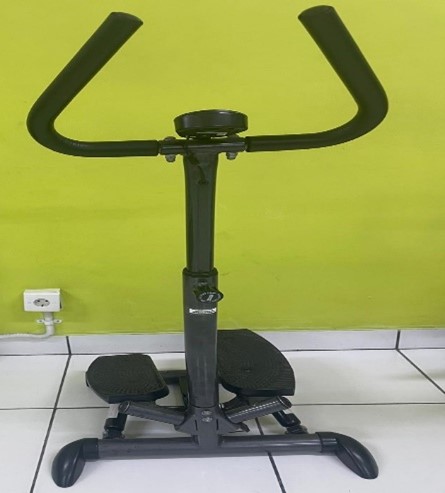Human-Integrated Systems Laboratory
Introduction
The Human-Integrated Systems Laboratory (HISL) allows students to have the opportunity to learn about designing work systems that consider ergonomics and human behavior. It is important to integrate form and function between nature, humans, and the physical environment to build the work system design. Work system design deals with the systematic examination of the methods of doing work with an aim of finding the means of effective and efficient use of resources and setting up of performance standards for the work being carried out. Furthermore, students in the laboratory can analyze labor motions to determine efficiency and provide solutions to improve those motions.
Equipment and Facility
Anthropometric chair. A type of chair specifically designed based on the principles of anthropometry, that is the study of the size and proportions of the human body. This chair is designed to ensure optimal comfort with consideration of variations in user’s body size. For instance, anthropometric chairs are often adjusted in terms of height, depth, and angle to support ergonomic posture, reduce the injury risk, and increase productivity. This design is typically implemented in work or education environments to ensure that the chair meets the needs of a variety of users with different body sizes.

Smart bike. A kind of exercise bicycle equipped with advanced technology to enhance the indoor cycling experience. Some smart bikes are also equipped with security features such as location tracking. This technology aims to make cycling more efficient, safe and enjoyable with the integration of real-time data and digital interactions.

Environment meter. A tool used to measure various parameters to assess the environment condition, such as temperature, humidity, air quality, noise, and pollution levels. By collecting such data, environment meter helps in monitoring and analyzing the impact of human activity on the environment, as well as supporting decision making in environmental management and urban planning. This tool is important in environmental research, industrial applications, and quality of life to ensure a healthy and sustainable environment.

Fitness stepper machine. Exercise equipment designed to simulate the movement of going up and down stairs, performing cardiovascular and lower body strength training. This machine is usually equipped with two pedals that can be moved alternately, similar to steps in climbing stairs. Fitness stepper machines are effective in burning calories, increasing leg muscle strength, and improving cardiovascular function. Some models come with additional features such as heart rate monitoring, resistance settings, and workout programs that allow users to customize their workout intensity and goals. At Binus ASO, the HISL has two stepper machines to facilitate students doing their practicum very well.

Omron tensimeter. A blood pressure measurement device designed to provide accurate results and user-friendly. This device is usually equipped with digital monitoring technology and a cuff that is placed on the upper arm. Using electronic sensors and oscilloscope technology, the Omron tensimeter measures systolic, diastolic blood pressure and heart rate at the same time. Some models also offer additional features such as data storage for long-term monitoring, irregular heart rhythm detection, and connectivity to smartphone apps for easier tracking. These devices are important to help individuals monitor their cardiovascular routinely and ensure effective observation of high blood pressure treatment. At Binus ASO, the HISL has three devices to support students’ experiment as well as for those who are in need to utilize it for health monitoring purposes.

Driving simulator. A device designed to virtually simulate the driving experience for the purpose of practice, training, or research. This simulator usually consists of a driver’s seat, equipped with a steering wheel, pedals and control panel, as well as a screen or projector that displays the road environment down-to-earth. The system uses advanced software and sensors to mimic various driving conditions such as weather, traffic, and emergency situations, allowing users to practice driving skills in a safe and controlled environment. Driving simulators are often used in driver training, vehicle technology development, and safety research to improve driving skills and reduce the risk of real-world accidents.

Supported Courses
At Binus-ASO School of Engineering, the HISL supported the following courses:
- ISYE6197011 Human-Integrated Systems
